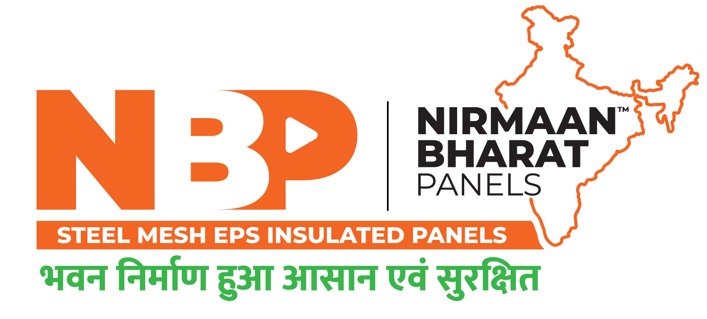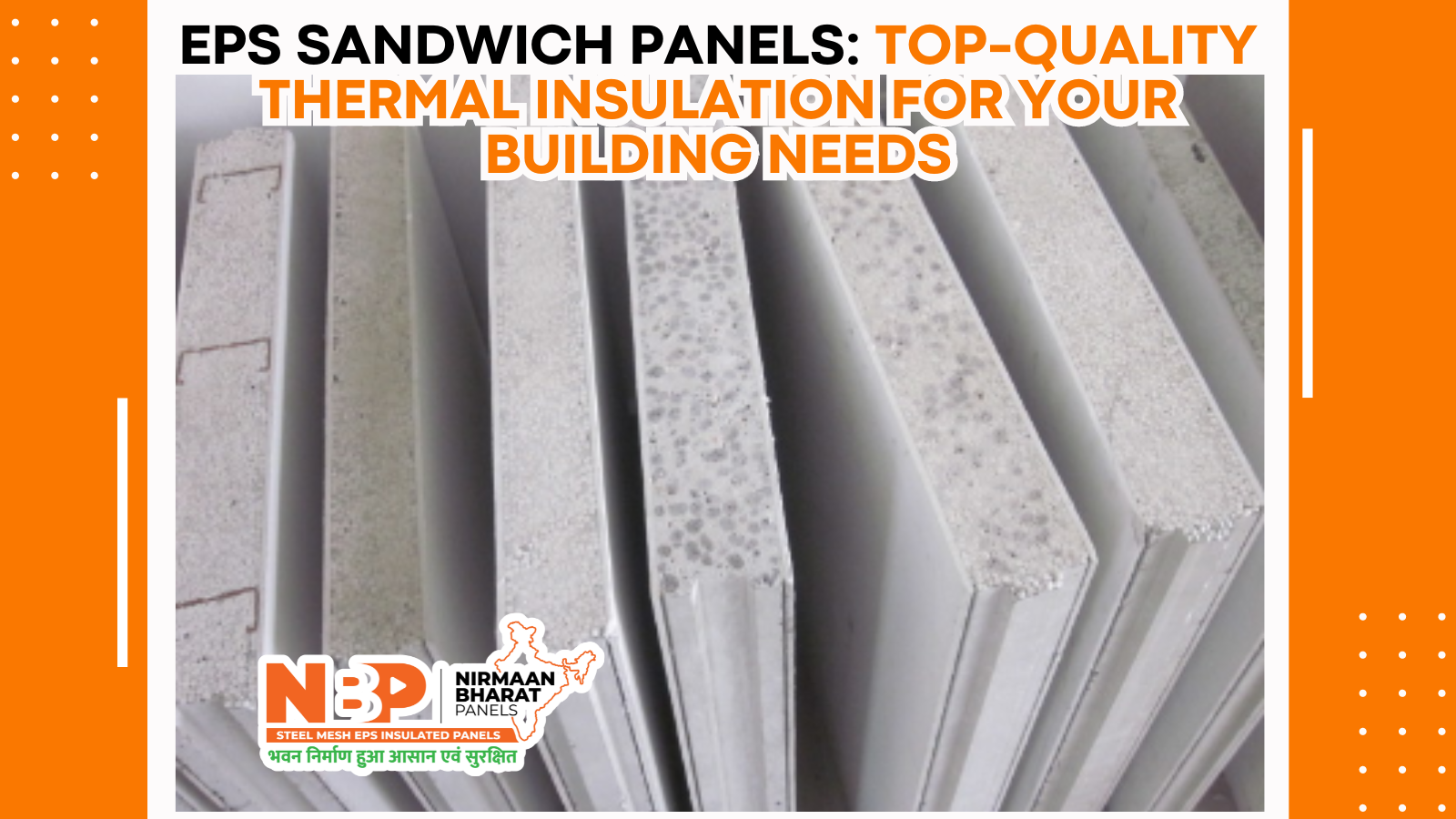EPS sandwich panels have become a top choice for thermal insulation in contemporary construction, thanks to their exceptional performance, adaptability, and efficiency. These panels consist of a core of Expanded Polystyrene (EPS) sandwiched between two outer layers of various materials, such as metal or concrete. This combination provides a range of benefits that make EPS sandwich panels an excellent choice for various building applications. Here’s an in-depth look at why EPS sandwich panels are considered top-quality for thermal insulation and building needs:
Table of Contents
Toggle1. Superior Thermal Insulation Performance
- Outstanding Heat Resistance:
- Low Thermal Conductivity: EPS panels feature a low thermal conductivity, which means they effectively prevent heat from escaping or entering the building.
- Stable Indoor Climate: Helps maintain consistent indoor temperatures, enhancing comfort and reducing the strain on HVAC systems.
- Enhanced Energy Efficiency:
- Reduced Energy Consumption: Lower heating and cooling demands lead to decreased energy use, benefiting both the environment and your wallet.
- Energy Efficiency Certifications: Often meets or exceeds energy efficiency standards, contributing to green building certifications.
2. Lightweight and Convenient to Handle
- Reduced Structural Load:
- Easier Handling: Light weight simplifies transportation and handling, reducing labor effort and associated costs.
- Lower Foundation Requirements: Decreases the load on building foundations, potentially lowering construction costs.
- Streamlined Installation:
- Quick Assembly: Prefabricated panels facilitate faster installation, which can shorten project timelines and minimize construction delays.
- Minimal Equipment Required: Often requires less heavy machinery, further cutting down on costs and site disruption.
3. Economical and Cost-Effective Solution
- Affordable Initial Investment:
- Budget-Friendly Material Costs: Lower upfront costs compared to some traditional insulation methods and construction materials.
- Cost Savings on Delivery: Reduced shipping and handling costs due to the lightweight nature of EPS panels.
- Long-Term Financial Benefits:
- Lower Utility Bills: Enhanced insulation reduces energy consumption, leading to significant savings on heating and cooling expenses.
- Extended Panel Lifespan: Durability ensures that the initial investment provides long-term value and minimizes the need for early replacements.
4. Robust Durability and Longevity
- Resilience to Environmental Conditions:
- Moisture Resistance: EPS panels resist water absorption, reducing the risk of mold and rot, even in humid environments.
- UV Protection: Panels are often coated or treated to resist UV degradation, maintaining their appearance and performance over time.
- Extended Lifespan:
- Wear and Tear Resistance: Maintains structural integrity and appearance under regular use and exposure to environmental factors.
- Low Replacement Frequency: Reduced need for replacement or repair contributes to overall cost savings and long-term durability.
5. Versatile Application Possibilities
- Adaptable for Various Uses:
- Building Envelope Applications: Suitable for exterior walls, roofs, and facades in diverse building types.
- Interior Partitions: Can be used for internal walls and partitions, providing insulation and separation within the building.
- Customizable Options:
- Variable Thickness and Sizes: Panels can be customized to meet specific thermal and structural requirements, including different thicknesses and dimensions.
- Choice of Finishes: Available in various finishes and colors to match aesthetic preferences and design goals.
6. Effective Soundproofing Capabilities
- Superior Noise Reduction:
- Reduced Sound Transmission: The EPS core effectively dampens sound waves, minimizing noise between rooms and from external sources.
- Enhanced Privacy: Provides acoustic separation, improving privacy and comfort in residential and commercial spaces.
- Quiet Environment:
- Improved Acoustic Comfort: Creates a quieter environment, contributing to a more peaceful and productive atmosphere.
- Noise Control in High-Traffic Areas: Ideal for environments with high noise levels, such as offices, schools, and hotels.
7. Enhanced Fire Safety Features
- Fire-Retardant Properties:
- Flame Resistance: Many EPS panels are treated to be flame-resistant, reducing the risk of fire spread.
- Heat Resistance: Panels can withstand high temperatures, helping to protect building occupants and structural integrity.
- Building Code Compliance:
- Fire Rating Certifications: Achieves fire ratings that comply with or exceed local building codes and safety standards.
- Enhanced Safety Measures: Contributes to overall fire safety strategies, including fire-resistant coatings and finishes.
8. Eco-Friendly and Sustainable
- Recyclable Material:
- Circular Economy Contribution: EPS panels can be recycled at the end of their lifecycle, supporting sustainability and reducing waste.
- Incorporation of Recycled Content: Many panels are produced with recycled EPS material, further reducing environmental impact.
- Reduced Environmental Impact:
- Lower Carbon Footprint: The energy efficiency of EPS panels helps reduce the building’s overall carbon footprint.
- Sustainable Building Practices: Aligns with green building certifications and eco-friendly construction practices.
9. Low Maintenance and Upkeep
- Minimal Maintenance Needs:
- Resistance to Mold and Pests: Non-porous surface helps prevent mold growth and resists pest infestations.
- Easy Cleaning: Smooth surface makes it easy to clean and maintain, reducing the need for frequent upkeep.
- Durable Surface Finishes:
- Long-Lasting Appearance: Outer finishes are designed to withstand weathering and maintain their appearance over time.
- Resistant to Stains and Dirt: Easy to maintain a clean and attractive appearance with minimal effort.
10. Design Flexibility and Aesthetic Options
- Variety of Finishing Choices:
- Architectural Versatility: Panels can be finished with materials such as metal, plaster, or stone to suit different architectural styles.
- Customization for Aesthetics: Allows for various textures, colors, and patterns to match design preferences and project requirements.
- Customizable Design Elements:
- Tailored Panel Shapes and Sizes: Custom-cut panels can fit unique design specifications and building configurations.
- Integrated Design Features: Panels can incorporate additional features such as integrated insulation or structural elements.
11. Enhanced Structural Strength and Support
- Load-Bearing Capacity:
- Robust Support: EPS panels provide structural support suitable for both load-bearing and non-load-bearing applications.
- Strength Integration: When combined with other structural components, EPS panels enhance overall building stability and strength.
- Structural Integration:
- Complementary Building Materials: Can be used in conjunction with other materials like steel or concrete to optimize structural performance.
- Support for Various Loads: Capable of handling different load requirements, making them versatile for various building types.
12. Efficient Construction Process
- Accelerated Installation:
- Prefabricated Panels: Pre-manufactured panels reduce the time required for on-site construction, speeding up project completion.
- Reduced Installation Complexity: Simplified installation process lowers the likelihood of construction errors and delays.
- Reduced On-Site Disruption:
- Minimized Construction Impact: Faster installation reduces the duration of construction activities, minimizing disruption to surrounding areas.
- Efficient Project Execution: Quicker assembly allows for smoother project execution and earlier occupancy.
Conclusion
EPS cement sandwich panels offer a top-quality solution for modern construction needs, providing exceptional thermal insulation, durability, and cost-efficiency. Their versatility in application, soundproofing capabilities, and eco-friendly attributes make them an ideal choice for a wide range of building projects. By leveraging the comprehensive benefits of EPS panels, builders and designers can achieve optimal performance, sustainability, and value in their construction endeavors.


